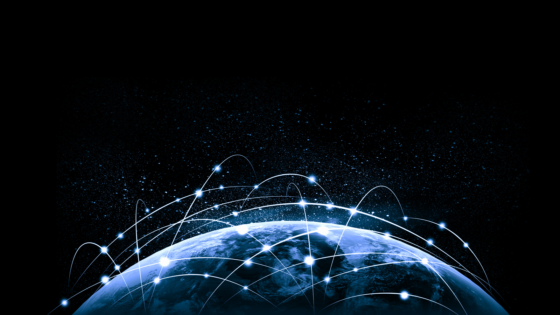The difference between translation and transcreation

Like all industries, localization has its own unique jargon. And while you don’t need to learn all the lingo, it’s helpful if you understand some basic terms before you start a translation initiative.
Translation and transcreation, for example, are two techniques for adapting content into the target language. One or both can be part of a localization strategy. However, when to use one over the other depends on the intent and visibility of the content. This post will help you decide which technique to use for different types of localization efforts.
Translation vs. localization vs. transcreation: Understanding the terminology
Before we dive in, let’s start by defining three key terms: localization, translation, and transcreation.
Localization
Localization is the process of modifying content and/or products to a specific local market. It involves adapting the entire user experience to local preferences and culture. This may include translation, transcreation, and machine translation to render content in the target language. It also includes adapting elements such as address formats, local currency, images, and cultural references.
Translation
Translation is the process of rendering written text from one language into another. It’s an umbrella term that encompasses different methods for completing the task. Here are three examples:
- Human translation an experienced, vetted linguist renders text from one language to another. The process might involve an editing step by a second linguist.
- Machine translation (MT) also known in the industry as “raw machine translation”, this process involves the use of machine translation software to automatically render content from one language to another. It generates translations based on computer algorithms, without human involvement.
- Machine translation post editing (MTPE) is a combination of machine translation by trained engines and human post editing. Like the name states, a linguist edits the translation produced by a machine. It may include light editing, such as correcting spelling and grammatical errors, or heavy editing such as re-writing for clarity, style, and tone.
The type of translation you need will depend on the intent and visibility of the content. Quality, budget, and timeline are also important considerations. For example:
- Human translation works well for content that requires an understanding of the nuances and cultural aspects of language. Marketing content like advertising campaigns, persuasive website and landing pages, social media posts and email campaigns are all good candidates for human translation. This method is typically more costly because translators serve as both linguists and subject matter experts. It can also take longer due to the time required for revisions.
- Machine translation works well for large volumes of content that need to be translated quickly and doesn’t require nuance. Technical, knowledge base type content, and customer service information are all good candidates for MT. Because it doesn’t require a human linguist, it’s faster and more affordable than other methods.
- Machine translation post editing (MTPE) works well for large volumes of content that
require a higher degree of accuracy and a quick turnaround. Technical content, such as instruction manuals or content like ecommerce product descriptions are good candidates for MTPE. It’s also faster and more affordable than human translation alone.
Transcreation
Transcreation, also known as copy adaptation, reimagines the source text to maintain the context, style, tone, and intent of the message for a specific locale. Brands often use transcreation to adapt ad campaigns, taglines, and other types of content that intend to provoke emotion. Whether you need to use transcreation will depend on the audience and intent of the content. Yet given the cost and expertise required, brands typically only use transcreation for highly visible marketing content and assets.
Transcreation: What is it?
Transcreation transforms brand messaging and concepts to make it appear as if they were developed specifically for a particular market. Because this type of content is highly nuanced, it requires a more intensive, creative process to develop an optimal local user experience that can’t be achieved through translation.
Transcreation: When do I need it?
Large localization programs typically include a mix of different translation methods as well as transcreation, depending on the content’s intent, use case, and budget. For example, a brand’s website may require:
- Machine translation for product descriptions, FAQs, and customer service-related content
- Human translation for homepage and landing page content that contain marketing messaging
- Transcreation for the tagline and ad campaigns that link back to the website
So, when should you choose transcreation over translation? Like most aspects of localization, it depends on your brand, the target market, and the local language. But most brands reserve their transcreation budget for high intent, high impact content.
Millions of people may recognize your slogan and see your ad campaigns, which is why you should carefully adapt them for new markets. While the text conveys the same message, the nuance of meaning may be better preserved through transcreation.
For example, Swiffer, an American brand of cleaning products, has the following slogan in English:
When Swiffer’s the one, consider it done.
The slogan works well because it uses rhyming couplets to demonstrate how well the brand’s duster works.
For the Italian market, it was transcreated as follows:
La polvere non dura, perché Swiffer la cattura.
This means, “the dust doesn’t last because Swiffer captures it.” Although it doesn’t sound poetic in English, the transcreation captures the playful tones and recreates the rhyming couplets in Italian. A translation alone may have failed to capture the same intent as the original English slogan.
Without effective transcreation, your marketing efforts in a new locale may fail to resonate with audiences. In the worst-case scenario, it could even damage your brand’s image. Translation errors or poor localization may result in your marketing sending the wrong message.
For example, Orange, a French mobile network operator, launched a marketing campaign in Northern Ireland that evoked memories of a long-standing religious conflict.
The company adapts its slogan as follows:
The future’s bright..the future’s orange.
But in Northern Ireland, orange is associated with the protestant group Orange Order. The slogan unintentionally alienated Catholic buyers and reminded all residents of the country’s violent past.
The transcreation process: Transforming brand content for a new locale
Now that you know more about the benefits, let’s take a look at the transcreation process and how it fits into localization. Below are some general guidelines:
Localization strategy and plan
Start with a localization strategy and plan. This should involve:
- Conducting research to determine which market(s) you want to enter. Where do you see a demand for your product or service? Would it be profitable to launch there?
- Estimating how much you’re willing to invest in localization. This will help you determine which language(s) and which types of content will have the highest ROI.
- Setting a timeframe for the launch. This will help you prioritize what you need to localize first. Keep in mind that localization projects can take months, depending on the scope.
Find a localization partner
Once you have a plan, it’s time to find a localization partner. As you compare service providers, look for one that:
- Specializes in your industry
- Has a network of translators who are natives in the target country
- Offers transcreation services
Your localization provider will work with you to develop style guides and glossaries to ensure your brand message remains consistent in every language. Try to provide as much information as possible about your brand and business goals. This may include:
- A list of products and services
- Brand guidelines and existing style guide
- Market research
- Target audience(s)
- Vision and values
Your localization partner will use this information to create a brand positioning strategy, and provide guidance on how to best localize, translate, and transcreate content. Ideally, they will assemble a team of transcreators who are both subject matter experts and native to the target country. That’s because trancreation requires in-depth knowledge of the local culture and current vernacular.
Native linguists will then provide an initial version of the copy. Given that this is a collaborative process, the copy may require several rounds of revisions based on your feedback. Providing more guidance can help reduce turnaround times, but transcreation does take longer than translation. Once you are happy with the transcreation, the project will undergo an extensive quality assurance (QA) process to ensure it’s ready to launch.
Reach new global audiences with transcreation services
As you can see, transcreation allows you to transform your brand for global audiences in ways that translation alone can’t. It requires a careful blend of copywriting and translation, but when done right, transcreation will greatly enhance your brand’s image.
At Acclaro, our localization experts work with you to determine how transcreation fits into your overall strategy. No matter the market, we’ll bring your vision to life—without sacrificing brand integrity. Contact us today to learn more about how transcreation fits into your localization strategy.
Insights for global growth

Power your strategic growth
Go beyond tactical localization with tailored, strategic solutions that resonate locally and drive growth globally.
Get started





